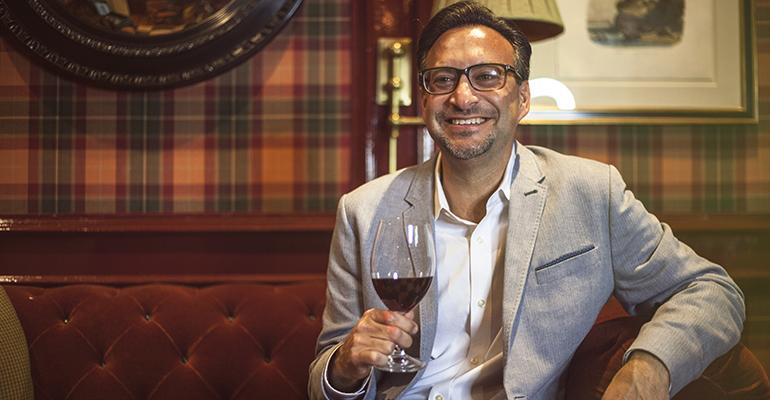Damian Mogavero is a restaurateur-turned-software executive on a mission to convince independent restaurant operators to use data.
It’s not an entirely selfless mission.
Mogavero is founder of the software company Avero, which collects restaurant data. And he is author of the recently released book “The Underground Culinary Tour: How the New Metrics of Today’s Top Restaurants Are Transforming How America Eats.”
But Avero is just one in a growing number of restaurant technology companies that give restaurant operators tools for tapping insights, from menu sales trends to inventory management.
Mogavero’s message is that restaurants now have a torrent of information available to help them improve their businesses. All they have to do is learn how to use it.
 It’s a fundamental shift in thinking that Mogavero hopes operators will take to heart — especially independent operators who are more used to running on gut and intuition.
It’s a fundamental shift in thinking that Mogavero hopes operators will take to heart — especially independent operators who are more used to running on gut and intuition.
“People think technology is for big companies, but that couldn’t be further from the truth,” he said.
Within the industry, the list of data believers includes a number of prominent names, including Danny Meyer, Tom Colicchio, Daniel Boulud, Giada De Laurentiis and Wolfgang Puck.
Mogavero calls those operators the “New Guard,” restaurant companies that have revolutionized their operations by paying attention to measurable insights, staying on top of trends and watching their customers’ behavior.
It’s like the movie Moneyball, he said. Scorecards can reveal all manner of hidden details that restaurant operators can use to improve performance, even for teams without big budgets.
The title “The Underground Culinary Tour” is a reference to an actual tour Mogavero used to do with industry search firm executive Alice Elliot, taking CEOs on a 15-restaurant tour over 25 hours. The book instead takes readers on a tour of certain restaurants to show how they’re using data in innovative ways.
“The book reveals the magic behind the scenes,” he said. “And one of the invisible ingredients is data.”
Harrah’s uses data to spot training needs
At Harrah’s Entertainment in Las Vegas, for example, sales data showed how one server named Alana sold many glasses of wine, but no bottles. A conversation with Alana revealed that she was terrified of opening bottles at the table, a problem that was solved with a little training and confidence building. The result: an immediate improvement in sales, Alana’s tips and the guest experience.
Tracking weather for incremental sales
The restaurant Navy Beach in Montauk, N.Y., tracks weather to determine staffing and inventory needs. When the weather is nice, the restaurant noticed that sales drop because people were out on the water. So the restaurant bought a dinghy and offered pick-up service, ferrying in guests from their boats and nearby beaches.
Fogo do Chao predicts meat needs
At the Brazilian churrascaria chain Fogo do Chao, historical statistics on hourly demand determine how much meat the all-you-can-eat concept should prepare, down to details as specific as how many steaks to put on a skewer. During peak hours, for example, three pieces of picanha per skewer go out to the dining room. At off peak, only two slices per skewer, to ensure what’s served is hot off the grill and juicy.
These are details that translate directly to the bottom line, said Mogavero, and they are vital for all restaurants, from big chains to one-off mom-and-pops.
But the restaurant industry has been slow to adopt data analytics, he said.
“This is a very artistic industry,” he said. “One of the challenges is whether you’re more artist or mathematician. What I see in the marketplace is a new generation that will be more equal parts creative and math focused.”
Consumer trends once took years to develop in the restaurant industry, he added. Now, with social media, consumer demands change within months, and restaurants need to be nimble, he said.
Rising food and labor costs are also forcing restaurants to become more efficient. “Technology must and is playing a key role to optimize the bottom line and provide a great guest experience,” he said.
Mogavero has stepped down as CEO of Avero to launch a new business, though he declined to reveal details. It’s one that will apply the principals in the book to further the next generation of restaurants with the help of data.
His new project is a continuation of his efforts to inspire a world in which, as he wrote in the book, “trends are discovered, the kitchen never runs out, the bar and wine cellar are always stocked, and guests are assured of a special time they will want to relive, again and again.”





